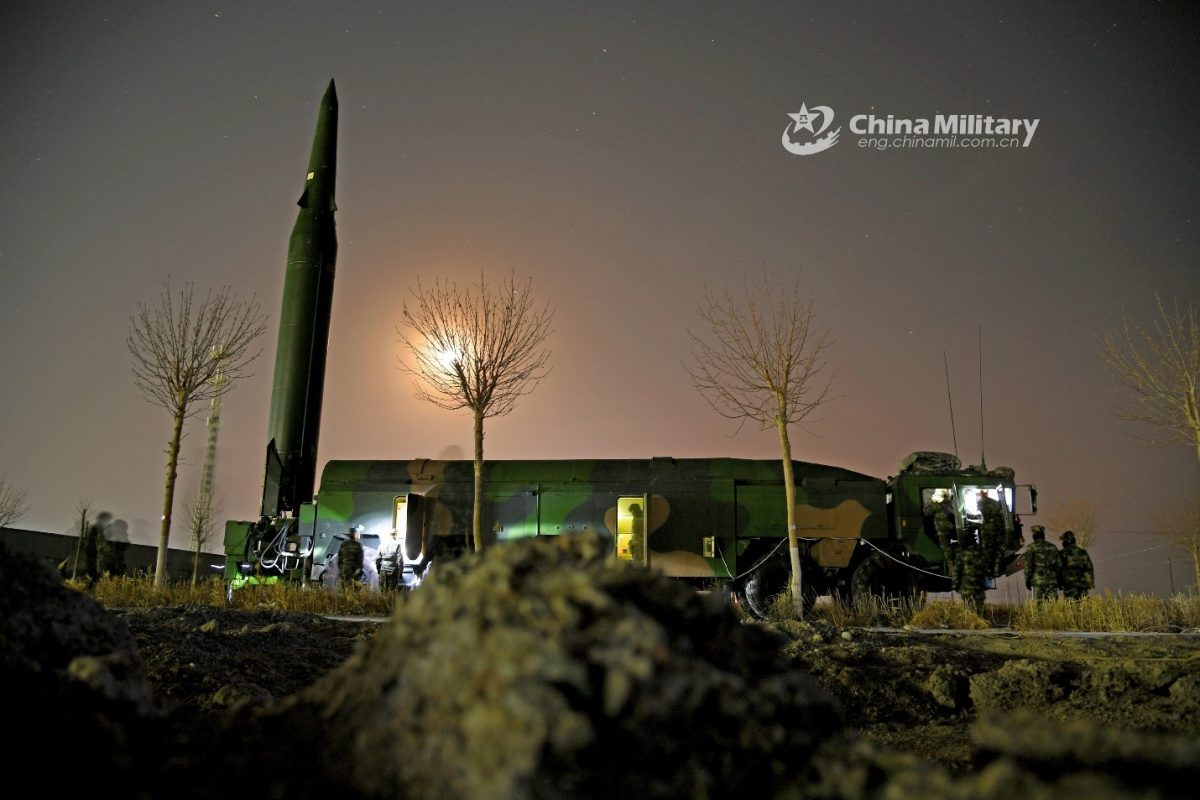The United States is on a descent to becoming only a third-rate nuclear power. Russia has the world’s largest nuclear arsenal, a result of an agreement reached during the Obama Administration. Now, it has been revealed that China has more land-based ICBM launchers than the United States. Equally troubling, in just the last two years, Beijing has doubled the number of warheads in its possession.
U.S. Representatives Mike Rogers (R-AL), Chairman of the House Armed Services Committee, and Doug Lamborn (R-CO), Chairman of the Subcommittee on Strategic Forces, and U.S. Senators Roger Wicker (R-MS), Ranking Member of the Senate Armed Services Committee, and Deb Fischer (R-NE), Ranking Member of the Subcommittee on Strategic Forces, noted that the latest information indicates that China has surpassed the United States in the number of land-based fixed and mobile ICBM launchers. The National defense Authorization Act requires the U.S. Strategic Command to notify Congress when the number of ICBMs, nuclear warheads, or ICBM launchers in China surpasses the United States.
The Representatives note that “The head of U.S. Strategic Command has informed us that China has surpassed the U.S. in the number of ICBM launchers – this should serve as a wake-up call for the United States. It is not an understatement to say that the Chinese nuclear modernization program is advancing faster than most believed possible. We have no time to waste in adjusting our nuclear force posture to deter both Russia and China. This will have to mean higher numbers and new capabilities.”
Under President Xi’s rule, China has nearly tripled its defense spending. His nation now has the largest army and navy on the planet, and is urgently preparing them for combat against advanced adversaries, particularly the United States. Most experts believe that 2027 is the target date for having them ready for a major conflict.
Rogers has opened hearings on China’s quickly growing threat. He notes that “China is the most challenging national security threat America has faced in 30 years. If we fail to acknowledge that, and take immediate action to deter it, the next 30 years could be devastating for our nation. “
China’s conventional (non-nuclear) advances are deeply troubling as well.
America’s technological edge, once considered Washington’s strongest asset, has eroded. China has leaped ahead of the U.S. in crucial areas such as hypersonic technology, quantum computing, and artificial intelligence. It’s space program is on a par with America’s in most areas.
It is clear that these developments are not made with self-defense in mind. According to Rogers, “The CCP is not building these new and advanced military capabilities for self-defense.
In recent years, the CCP has used its military to push out its borders, threaten our allies in the region, and gain footholds on new continents. In violation of international law, the CCP has built new, and commandeered existing, islands in the South China Sea, where it has deployed stealth fighters, bombers, and missiles. It continues to intimidate and coerce Taiwan, most recently by surrounding the island with naval forces and launching endless fighter sorties across the centerline. In recent years, the CCP also established a space tracking facility in South America to monitor U.S. satellites, as well as an overseas naval base just miles from our own on the strategically vital Horn of Africa.”
Concern is being expressed not just by Congress, but by international observers as well. The BBC recently warned that “Many Western observers now believe a profound shift in the global balance of military power is under way.”
The Biden Administration continues to lag behind in responding to the growing crisis. Indeed, its latest budget ignored the consensus that the U.S. Navy needs to expand to respond to the threat.
Photo: Soldiers assigned to a brigade under the PLA Rocket Force erect a ballistic missile launcher into position on the launching truck at night during a recent realistic training exercise. (eng.chinamil.com.cn/Photo by Zhang Feng)
